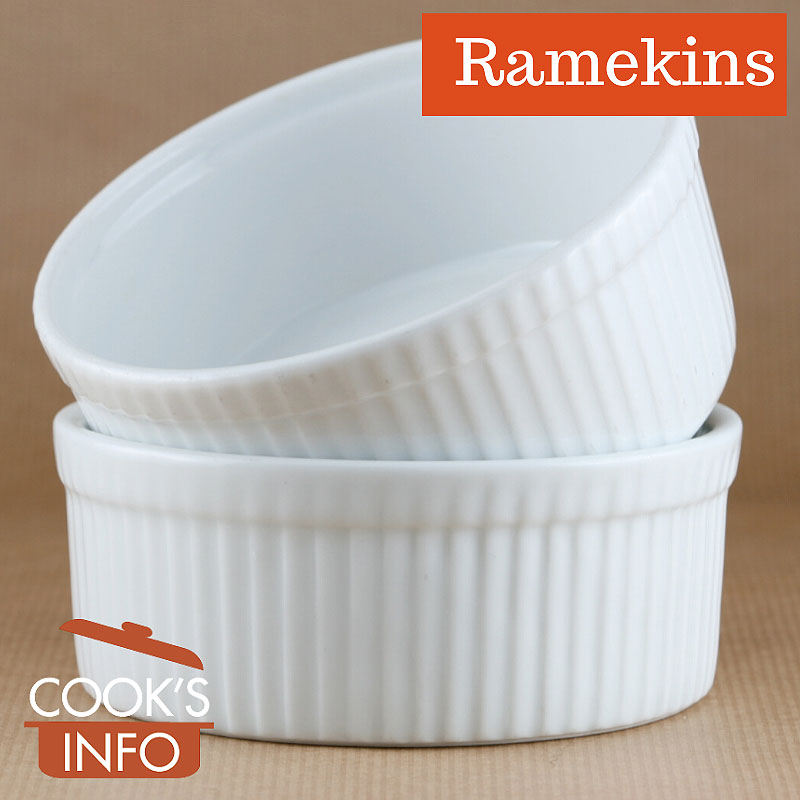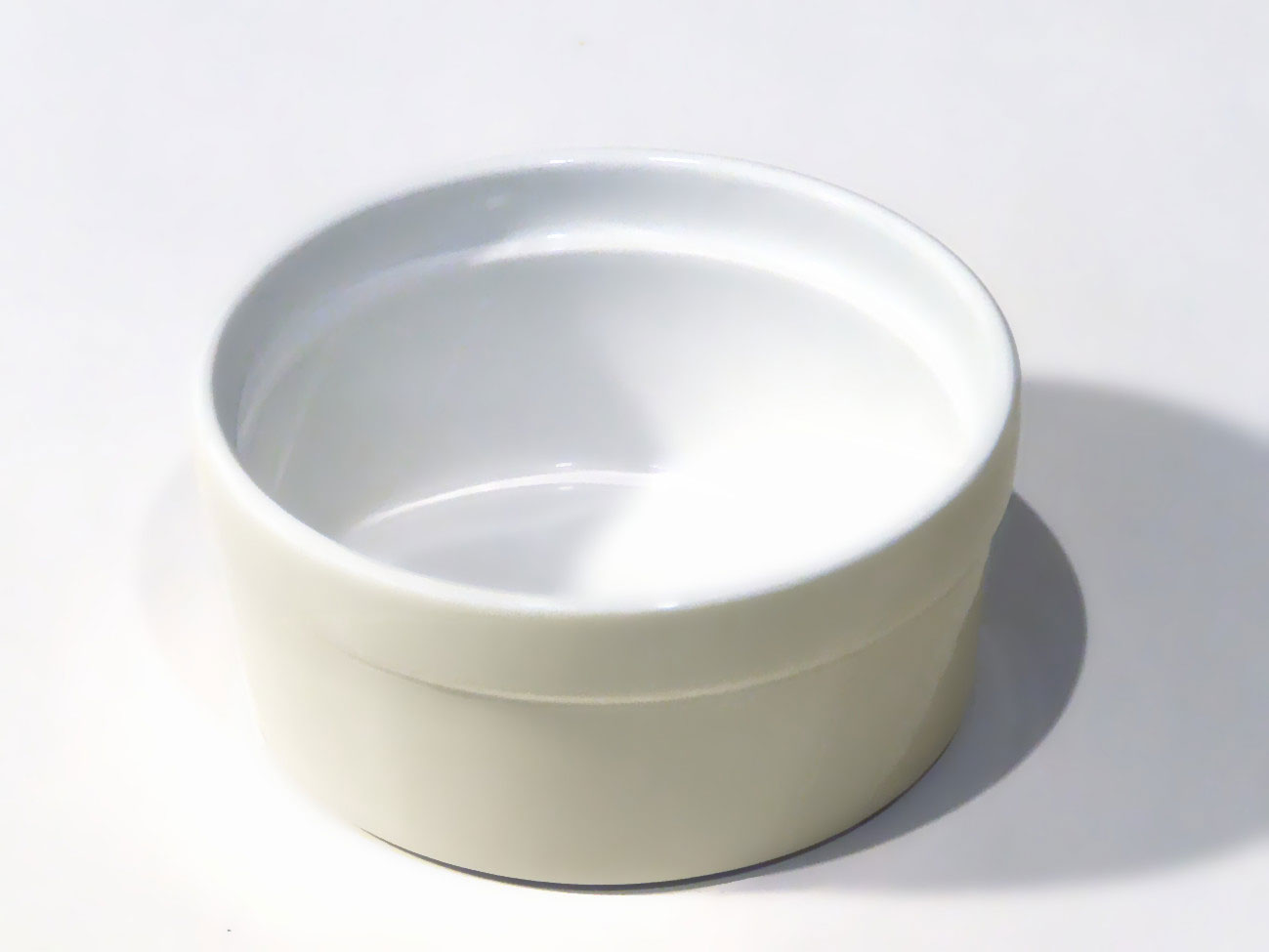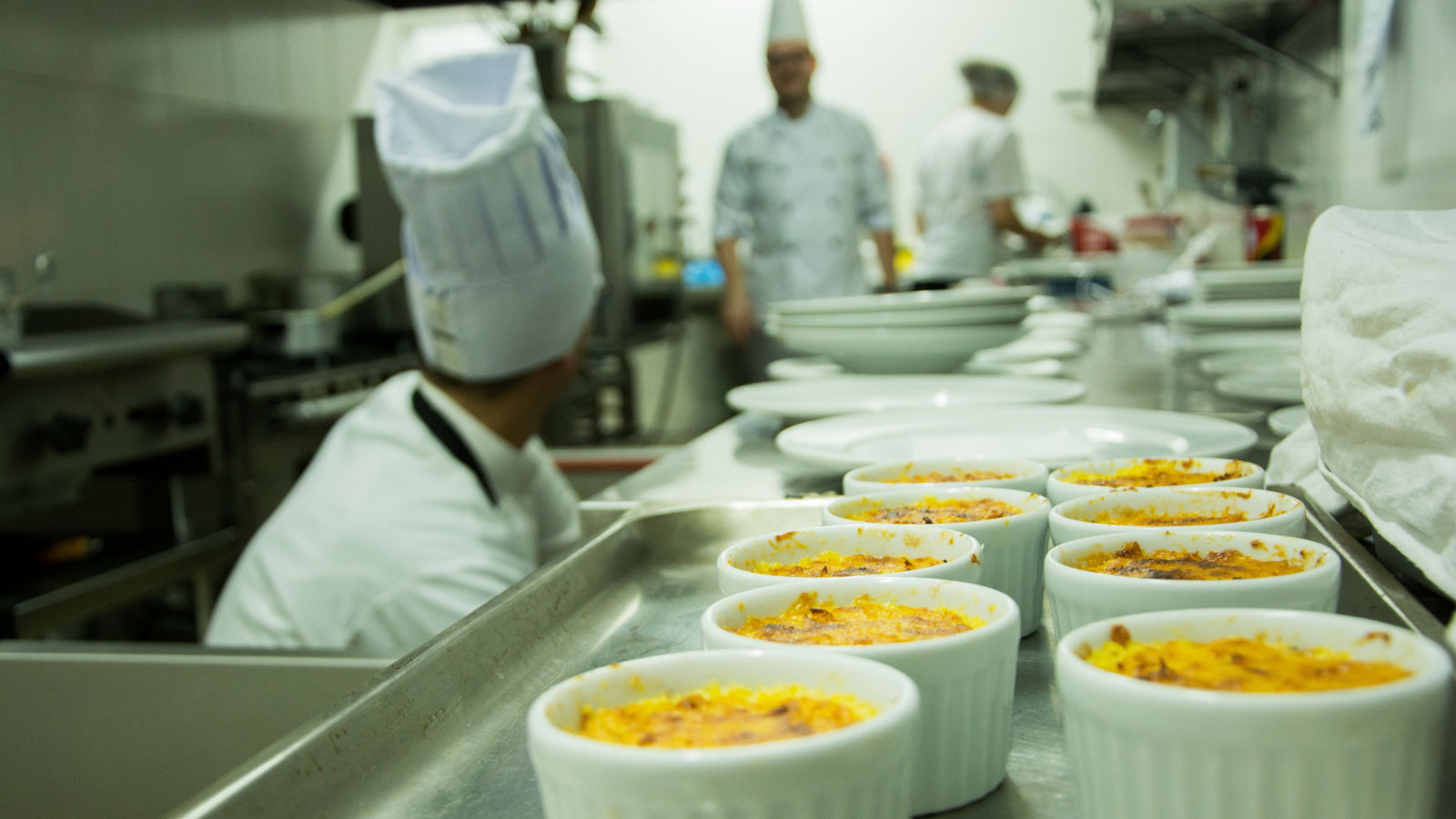
Ramekins. Steven Jackson / flickr / 2009 / CC BY 2.0
Ramekins are small, heatproof dishes for baking that look like a miniature soufflé dishes. They are individual-portion sized; you both cook and serve in them.
Because ramekins are so small, heat easily gets to the middle of what you are cooking in them. Sometimes you put them straight in the oven, sometimes you put them in a water bath first and then into the oven. They can also go in pressure cookers, and many may also be microwave safe (check with the manufacturer.)
Uses for ramekins
A typical use for ramekins in North America is for crème brûlée.
You usually eat right out of ramekins. There are very few things have you turn them out of the ramekin. If you must turn something out of a ramekin, dipping the ramekin in hot water for a few seconds (not letting it go “plunk” and sink under the water) should help to loosen what’s inside it.
You can also use ramekins as serving dishes for dips, pâtés, tapenade, flavoured mayonnaises, herbed butters, meat jus for dipping, etc.
They can also be used as prep dishes in the kitchen for small amounts of ingredients.

Ramekin. Ian F. / wikimedia / 2006 / CC BY-SA 2.5
Ramekin types, sizes and storage
Ramekins can be made of glass, porcelain, or ceramic. Glass ones tend to have thinner sides, and so food cooks faster in them. Ideally, a soufflé needs the little more time that it will get from a ceramic ramekin. Classic ramekins are white, with fluted vertical edging on the outside, and a thin lip on the inside.
You can get really fancily decorated ramekins, such as those made by Royal Worcester. Some people pride themselves on such sets.
They are usually round, but the sky is the limit these days for novelty shapes. They will be will be anywhere from 7 to 15 cm (3 to 6 inches) wide. They are generally wider than they are tall. Typical volume sizes are 90 ml, 135 ml, 150 ml, and even up to 200 ml (3 oz, 4 ½ oz, 5 oz, 7 oz.) Ideally, if you’ll use them and have room for them, it is good to have 3 sizes: small, medium and large. They are often sold in sets.
That being said, ramekins are very hard to store because they don’t stack well. You can only go so high with stacking them because the piles get unstable after they get 3 or 4 high. As a result, they want a lot of surface shelf space, and many people get rid of them for this reason. Some people build holders that use dowel wood for sides to hold them up in a stack. Some people store them in the very large soft drink bottles that they cut the top off of; others put thin cardboard on top of each ramekin to provide stable support for the next one.
Language Notes
There’s only speculation as to where the English word “ramekin” came from, as there are many plausible explanations. One is that it came from a Germanic language, such as German or Flemish, and means “little cream” (“ram” being “cream” in German; “kin” being a suffix that means “little.”)
You may also see it in English spelled in French fashion as “ramequin.”
In French cookbooks several centuries old, ramekin can refer to a small piece of bread that is fried and garnished.

Ramekins in restaurant kitchen. pxfuel.com / Public Domain

